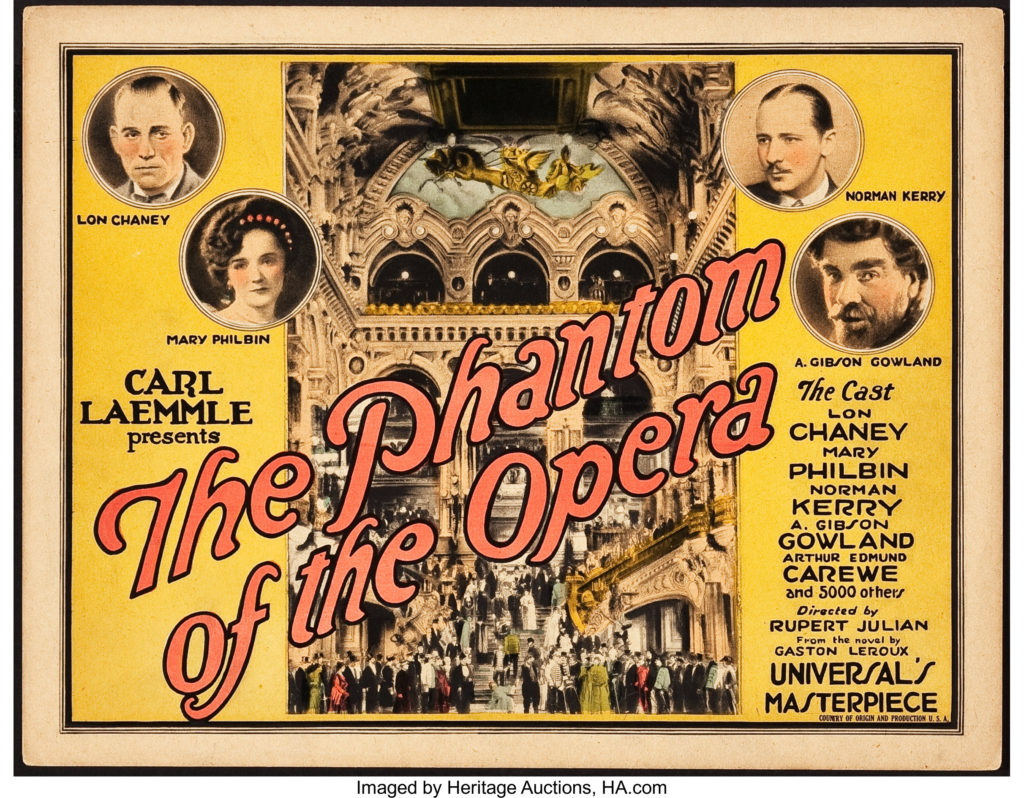
Watch On Bruised Onion Studio YouTube Channel
The Phantom of the Opera (1925)
American silent horror film.
A mad, disfigured composer seeks love with a lovely young opera singer. Lon Chaney in the title role as the deformed Phantom haunts the Paris Opera House, causing murder and mayhem in an attempt to force the management to make the woman he loves a star.
Following the success of The Hunchback of Notre Dame in 1923, Chaney was once again given the freedom to create his own makeup, a practice which became almost as famous as the films he starred in. The film is famous for Chaney’s ghastly, self-devised make-up, which was kept a studio secret until the film’s premiere.
The Phantom of the Opera is based on Gaston Leroux’s 1910 novel Le Fantôme de l’Opéra. Although this particular adaptation is often considered the most faithful, it contains some significant plot differences from the original novel.
The filmmakers initially intended to preserve the original ending of the novel, and filmed scenes in which the Phantom dies of a broken heart at his organ after Christine leaves his lair. Because of the preview audience’s poor reaction, the studio decided to change the ending to a more exciting one.
Edward Sedgwick was hired to provide a climactic chase scene, with an ending in which the Phantom, after having saved Ledoux and Raoul, kidnaps Christine in Raoul’s carriage. He is hunted down and cornered by an angry mob, who beat him to death and throw him into the Seine.
In 1998 The Phantom of the Opera was added to the United States National Film Registry, having been deemed “culturally, historically or aesthetically significant”
| Directed by |
|
|---|---|
| Produced by |
|
| Screenplay by |
|
| Based on | The Phantom of the Opera by Gaston Leroux |
| Starring |
|
| Music by | Gustav Hinrichs |
| Cinematography |
|
| Edited by |
|
|
Production
company |
Jewel Productions
|
| Distributed by | Universal Pictures |
|
Release date
|
|
|
Running time
|
|
| Country | United States |
| Language | Silent (English intertitles) |
| Box office | $2 million |
